Content creation is an ever evolving process.
You could be the Hemingway of the online world, but you’ll inevitably find that even your most comprehensive piece of content has missed the mark somewhere.
Content gaps are inevitable for many reasons, but the most common are:
- Outdated information – for example, changes in interest rates.
- Reduction or increase in keyword density – fluctuations based on interest and demand.
- Customer interest shifts – remember fidget spinners!?
- Changes in legislation – the CBD market is a good example of this.
These things are out of your control, but there is a way to seize the initiative and gain a leg up on the competition – a content gap analysis.
In this piece, we’ll be taking a deep dive into what a content gap analysis is and offer up some suggestions of how you can perform one of your own.
Why Are Content Gaps Important?
Content gaps are, as we mentioned, missed opportunities. And, when a user can’t find the exact information they’re looking for in a particular piece, it’s a good bet they’ll run to the warming embrace of your competition.
Of course, anyone can run a rudimentary content gap analysis of sorts, but the real trick is knowing what to do with the results of your investigations.
It’s about piecing together the puzzle that should align with the journey the users are taking through your website.
How Can A Content Gap Analysis Help Me?
When you analyse the existing content you have available to your audience, you’ll begin to notice the content that might be required for certain demographics when they are looking for a reason to purchase a product, make an inquiry or subscribe to a newsletter etc.
A typical content gap audit might encompass a range of written media, but most commonly you would investigate:
- Landing pages.
- Blogs, guides and resources.
- Social content.
- Downloadables, such as Ebooks.
- Anything else you consider a content asset.
By now, you might be thinking that this sounds like a lot of effort, and it is! But the results are absolutely worth it, some of the benefits include:
- Ranking improvements – by bridging the gaps between your content marketing efforts, you’ll find that you begin to rank for more crucial key terms for your business; perhaps even those you hadn’t thought of before.
- Greater affinity with your audience – amending content gaps gives your readers a bigger picture of what you offer and who you are, which helps forge a stronger connection between you.
- An optimised journey – by analysing content gaps, you’ll be increasing the time your users are spending on the site and preventing them bouncing when they realise you haven’t covered the subject matter they wanted to see. This in turn increases your chances of making a conversion.
Matching Content to Buyer Journey’s
Not every user that lands on the website will be ready to make a purchase and will often just be on the lookout for some information to answer a query, looking for quotes or comparing your product to a competitor – in fact, stats show that 96% of visitors that land on your website aren’t yet ready to buy.
So, as a business, it’s down to you to ensure that each stage of the buyer journey has appropriate content to satisfy the needs of the customer at each stage of the funnel – whether that means they’re beginning their journey to solve a problem, or they’re ready to pull the trigger and make a purchase.
The mistake many businesses make is that they focus their efforts on creating informative guides and blog posts in order to attract a wider audience demographic, and while that isn’t necessarily the wrong thing to do, it can alienate those who are still considering their options.
When you’re putting together your content gap analysis, it’s important to consider exactly where your audience might be in the sales funnel, in order to successfully fulfil their requirements.
Of course, depending on your industry you can be as granular as you want with this process but this can usually be categorised into four steps:
- Awareness – this kind of content usually utilises a range of important keywords to support brand awareness. This usually serves as a solution to a pain point that a potential customer might be having and acknowledges that this customer is right at the beginning of their journey.
- Consideration – you should use this stage as a means to convince the customer that your solution is the right solution. You may wish to do this by giving away free content, comparing your products or services to your competition or creating a comprehensive FAQ section.
- Decision – the decision stage is where your customers will reach their conclusions, and this sort of content usually comes in the form of landing pages or product pages that entice the customer to make that final decision and convert.
- Success – Once your customer has converted ‘success’ content can come in many forms. It could be a thank you email, after sales support content or guides on how to use the product effectively.
By conducting a content gap analysis you’ll give yourself a fantastic opportunity to meet your customer’s wherever they are in the purchasing process.
In the next section, we’ll walk through five steps towards doing exactly that.
Conducting a Content Gap Analysis

As we’ve mentioned already, a content gap analysis involves far more than simply browsing through some historical blog posts and adding a few paragraphs here or there to generate a few extra keyword rankings.
In this next section, we’ll be walking through five tried and tested methods to dig deep into your content and fill in the gaps in your content strategy:
#1: Walk Through the Buyer’s Journey
It can be very easy to overthink things here, but we’ve all bought products online or enquired about a service, so it really is as simple as understanding what it takes to get a customer from A to B and then to C.
Sit down and take some time to physically draw out the road map and along the way you’ll get an idea of the kinds of questions that your audience might have as they move through your sales funnel.
We’ve taken an example of a fashion brand here, and their road map could you look something like this:
- A fashion-conscious consumer struggling to find stylish orthopaedic shoes.
- They may take to social media or search for something like, “stylish orthopaedic shoe companies.”
- They might find an article about “X Most Stylish Orthopaedic Shoes on the Market”.
- Once they have a list of brands, they are likely to search these brands individually by name, assessing the designs and quality of each shoe as they go.
- Once they’ve decided on a design they like, they’re likely to go as far as the product page to assess the features.
- They don’t buy immediately, but do get as far as the checkout.
- After a few hours an automated email is sent out reminding them.
- Several days later another automatic email is sent offering free delivery, and they decide to make the purchase.
This is just a small snapshot of a potential buyer journey for this example business, and even in this example there are several obvious content-creation opportunities.
As a business, it’s your job to work on these processes based on your offering.
#2: Thorough Market Research

One of the most effective means to understand what your customers want is pretty obvious: just ask.
Conducting a thorough market research survey will give you valuable insight into your audience’s most pressing questions, such as pain points, requirements, goals and concerns.
Of course, you should have a good idea of these already, but it never hurts to perform these processes regularly.
The feedback you’re given should then form the basis of your content strategy and fill in any gaps in your current one too.
You can create a simple survey in numerous ways through Google Forms, social media surveys and even software like SurveyMonkey.
Any response that you get from performing this process, will offer huge insights into a range of content ideas, all of which will closely align with the requirements and pain points of your audience.
#3: Analyse Your Current Content
Any good brand will be pushing all sorts of content across a range of platforms, such as ads and social media, but it’s hugely important that your website is aligned with the buyer journey that you’ve already mapped out.
Run a crawl on software such as ScreamingFrog to obtain a list of every URL on your site, and spend some time ensuring two things: firstly, decide if older pages are still relevant to your current audience, and secondly, if they are, ensure they sit in line with your current buyer journey.
Here’s exactly how to do this:
Head over to https://www.screamingfrog.co.uk/seo-spider/ and download the tool, if you haven’t done so already. If you’re crawling a site with less than 500 URLs, then the free version is perfect for you, otherwise, you can see the pricing structure here:
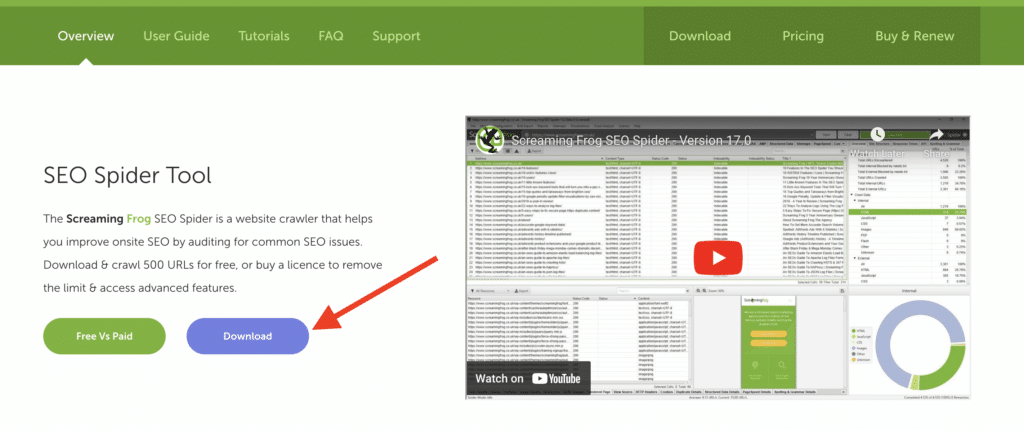
Once you’ve completed the download and followed the prompts, you should be greeted with a screen that looks like this:
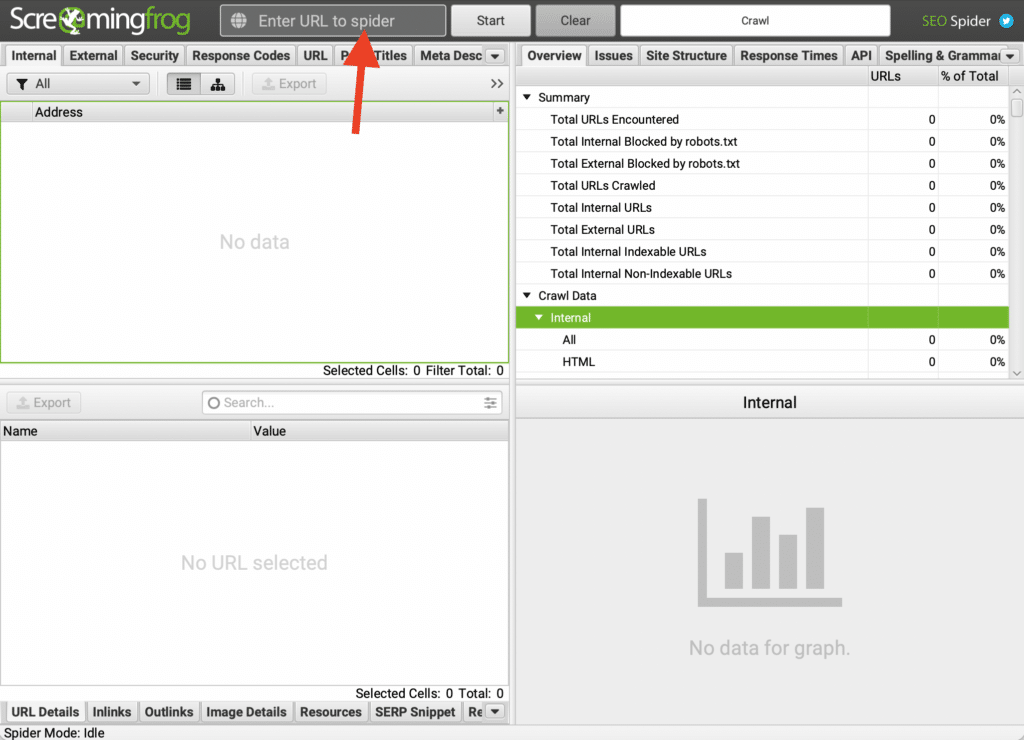
Now add your URL into the bar which reads ‘Enter URL to Spider’.
Once this crawl is completed, you’ll be presented with a list or URLs that looks something like this:
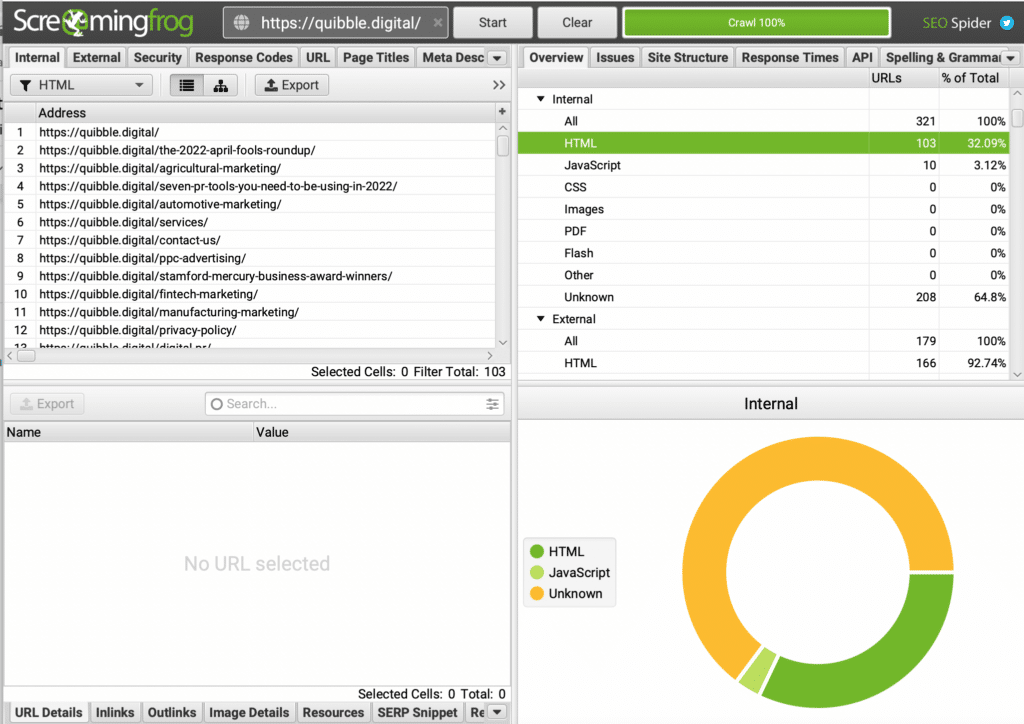
Now you’ve collated your URLs, you can import them into a csv file, like so:
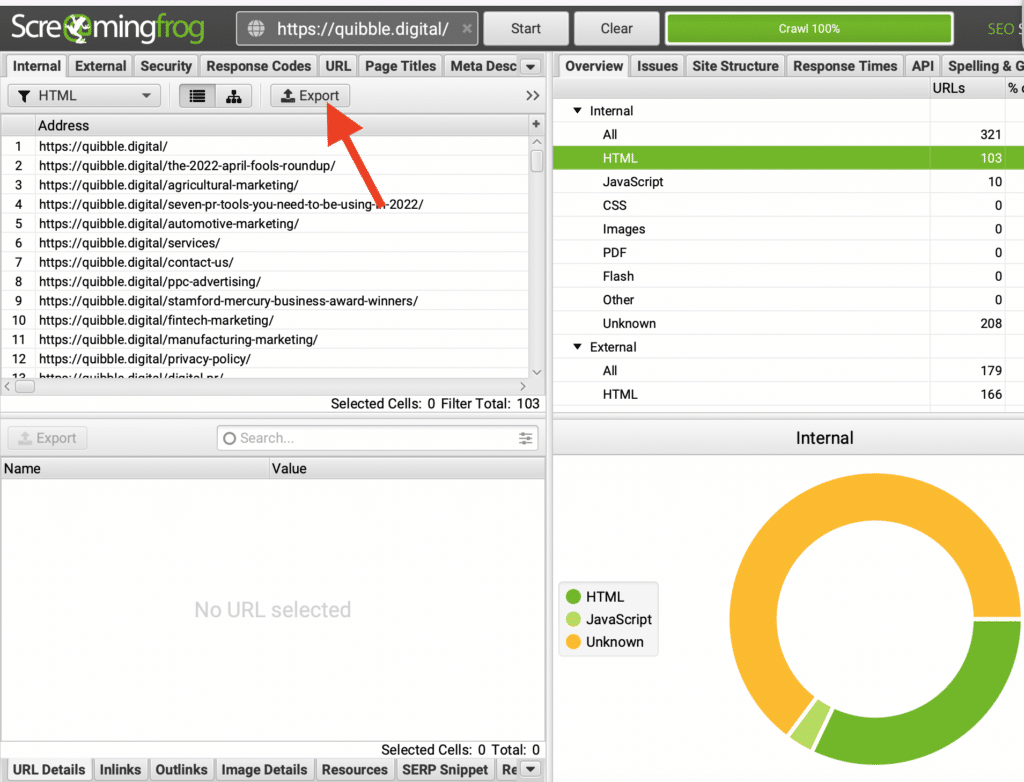
Now it’s a case of sorting through the data, removing irrelevant URLs, such as image links, and as you work through all of the relevant pages, you’ll clearly see when your content has missed a step along the way.
For instance, if you’re a mortgage broker and you have a blog entitled “How to Release Equity on Your Home” and your call to action is a “Hire Us” button leading to your contact page, then it’s likely that you’ll lose those that haven’t yet made up their mind about equity release.
From this, you might deduce that an article such as “7 Benefits of Releasing Equity on Your Property”, or “4 Reasons Why You Might Want to Release Home Equity”, will help to nurture those undecided prospects into hiring your services.
Another great way to understand where your site might be lacking is to utilise a rank tracking software, such as Ahrefs, Moz or Advanced Web Rankings to understand which keywords your content is already ranking for and the related keywords that you aren’t currently targeting with existing content.
#4: Check Out the Competition
Uncovering what’s missing from your website will often involve a methodical approach to ensure you’re including everything that’s missing.
However, sometimes it’s also a good idea to take a look over your shoulder and take a sneak peek at what your competitors are up to – not only is this a great way to find additional content avenues you might not yet have thought of, but it’s also a good opportunity to see where you measure up by comparison.
At this point, it’s worth mentioning that no two website’s work in exactly the same way, so what works for your competition may not work for you.
In other words, you need to take what make’s your competition’s strategy so strong, retrofit this into something that works for you and create something even stronger!
Tools like SEMrush should also be considered as part of your content marketing strategy going forward, and they’re ideal in this scenario for gaining a visual understanding of where you are when compared to your competitors.
The Keyword Gap tool on SEMrush, means you can compare yourself against your nearest competitors and understand where you might be missing some great opportunities, and highlight those which require improvement.
Here’s a step-by-step guide to doing just that:
Login to your SEMrush account and navigate to the left panel SEO ‘Dashboard’ and click ‘Keyword Gap’:
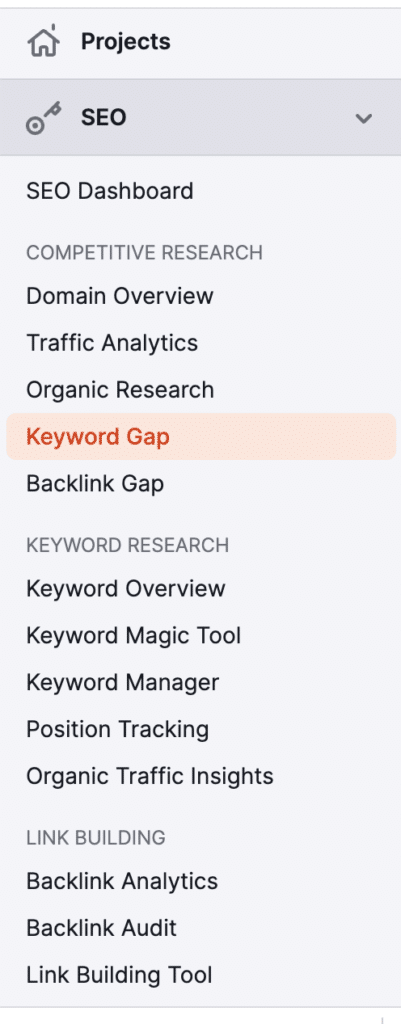
Once you’ve done this, you should see a screen that looks like the image below, this is where you compare yourself with some of your closest competition. You can toggle with the settings on these pages, but for now leave the right hand drop downs as ‘Root domain’ and ‘Organic keywords’.
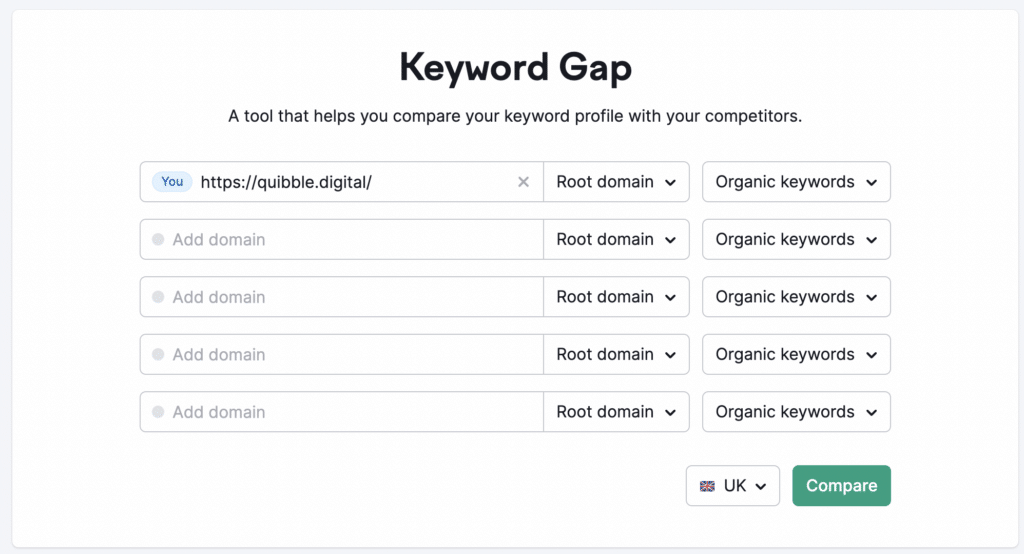
You can add up to four competitors here, and once you’ve done so hit Compare, and you’ll see this screen, which will give you a ‘Keyword Overlap’, which tells which competitors share similar keyword rankings to you:
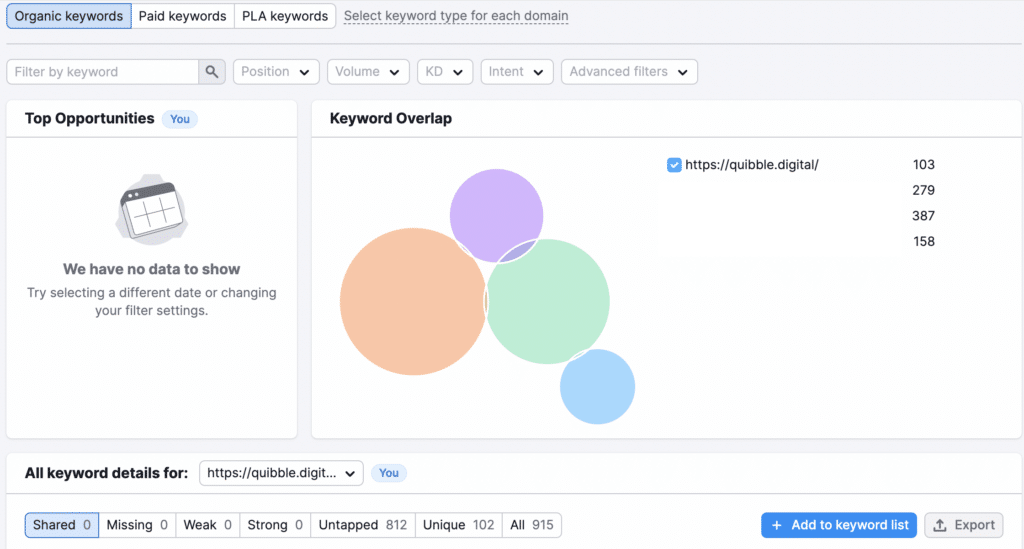
You can also toggle between each competitor to see which keywords are Shared, Missing, Weak, Strong, Untapped, and Unique to see which is performing better for certain keywords and which are completely unique to them, and those which you’re not currently ranking for.
This should give you a considerable range of opportunities to target, improve or ‘borrow’ from your competitors.
SEMrush have also created a guide for this process too.
#5: Utilise Google Search Console
It’s also possible to perform a content gap analysis using a tool that you’ve probably been using regularly – Google Search Console.
To do this, first login to Search Console as usually would, navigate to “Search Results” on the left hand bar:
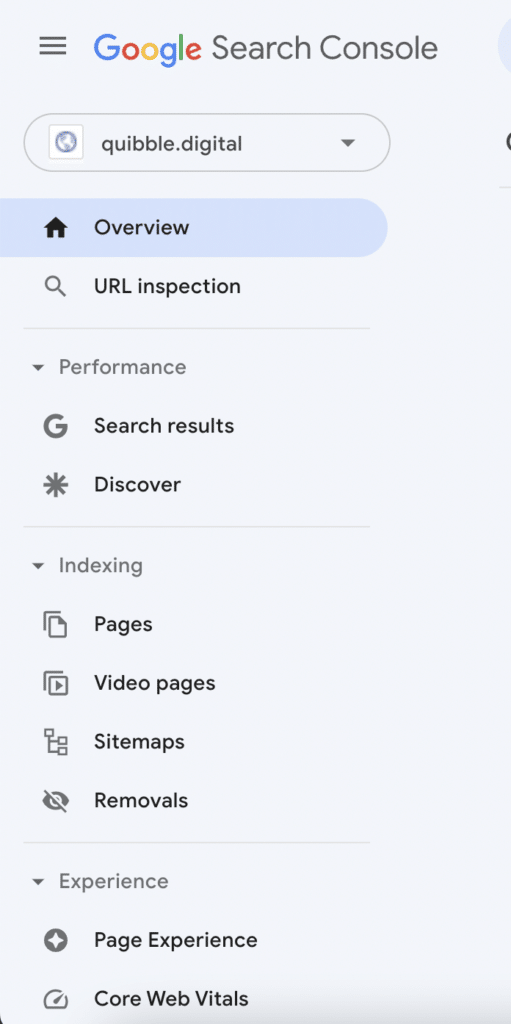
Now, click the +New button (you can also edit your date and search type as well):
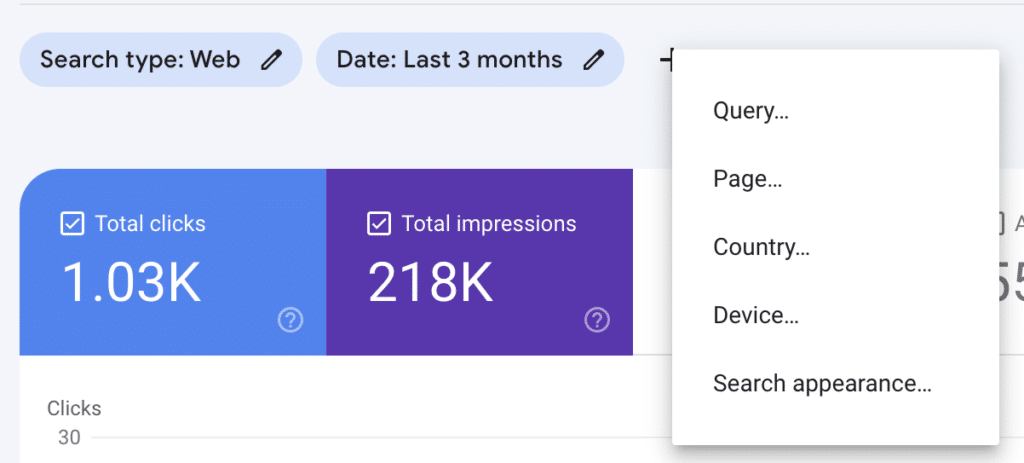
From here choose “Page”:
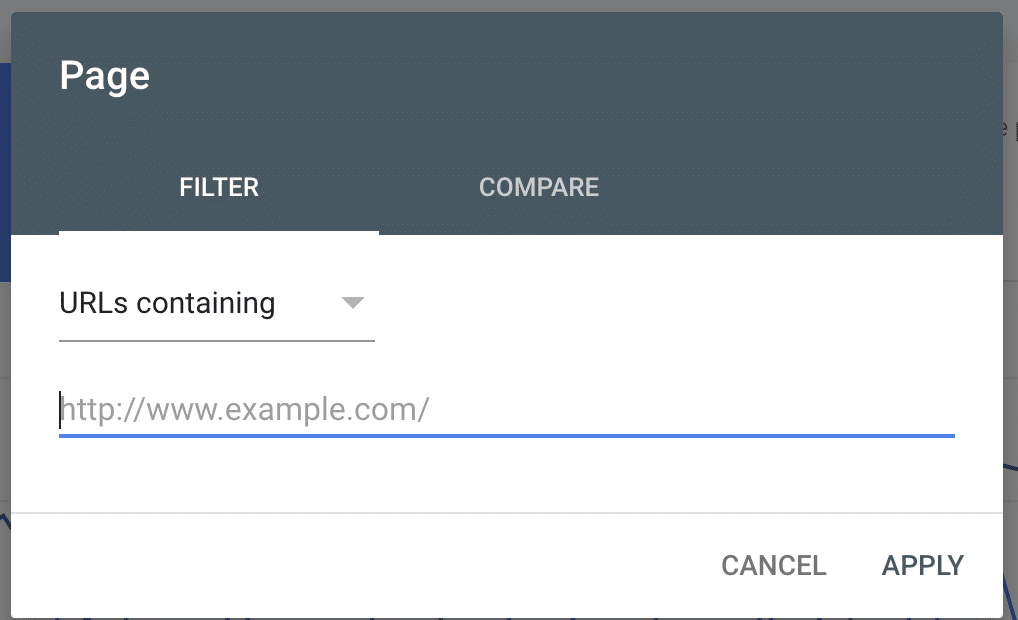
Now you can enter each of the URLs for the pages that are performing well (or not), to see a clear picture of the queries that might be relevant to that page.
Once you know what these queries are, you can go to the relevant page on your site and search for the keywords with the highest impressions/to clicks that aren’t included in the piece.
There’s a good chance there’s quite a few that you haven’t previously thought of. However, it’s also probably the case that not all of these queries will lend themselves to the current piece.
And that’s completely fine, it means that you can create new content pieces that centre around these terms too – it’s a win, win!
Takeaways
Many businesses will take the decision to focus their efforts on conversion-led pages in order to generate sales.
As we’ve covered in this blog, solely focusing on these pages is a mistake. After all, many visitors to your website won’t yet have made up their mind about making a purchase or settling on a service that’s right for them.
You need a healthy mixture of conversion-led content, as well as content that fills the gaps between each step of the buyer’s journey – this needs to happen from the very first moment that they are aware that they have a problem that needs to be solved, right up to the moment they decide to purchase.
By undertaking a thorough content gap analysis, you can fill in the gaps that a customer might fall through, and create the content that generates traffic and funnels users to the point of purchase.
It’s also an excellent opportunity to highlight new keyword opportunities, and gain a legup on the competition too.
The most effective content gap analysis should assess what is currently there and aim to meet the customer on each step of their journey by adding relevant content every step of the way, so they remain engaged throughout.
If you have any questions about content analysis or would like to know more about any of our other services, please get in touch with our team of experts.

